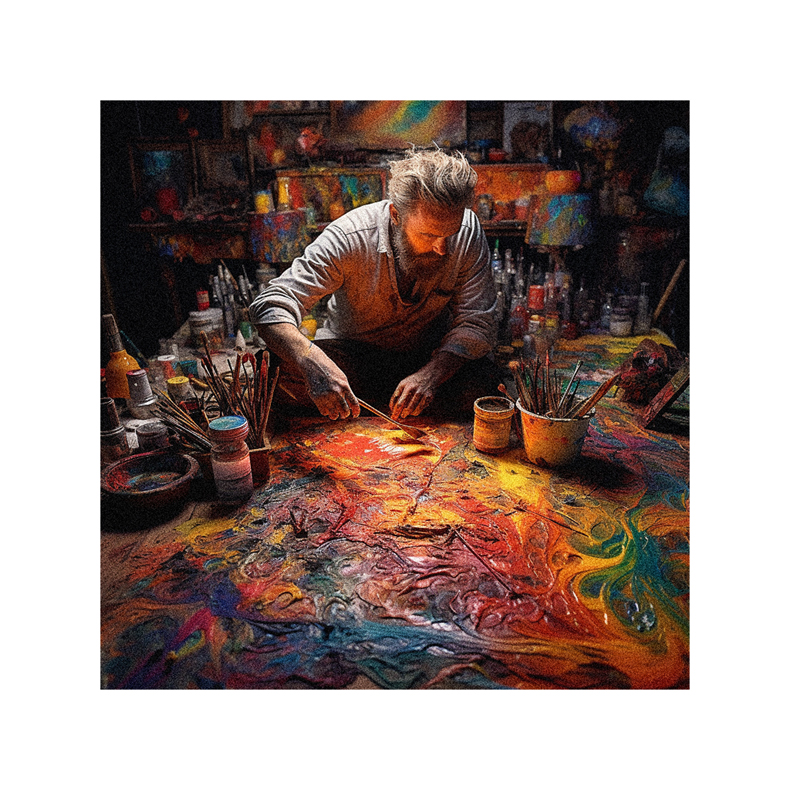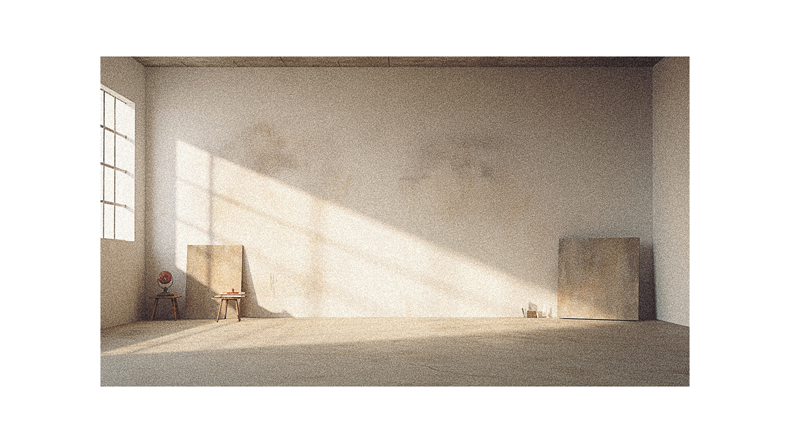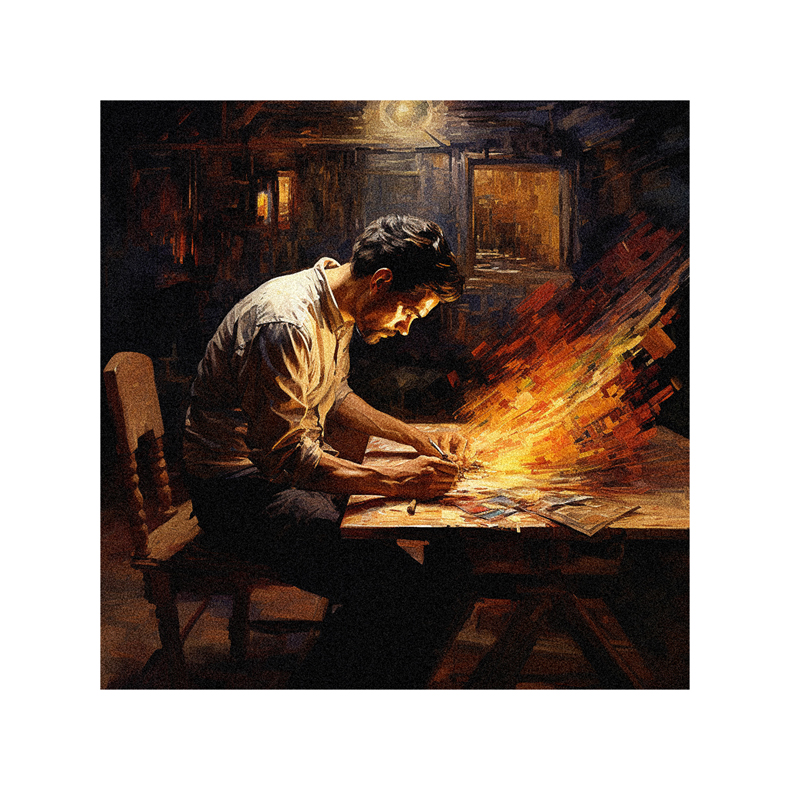Do you think your art style is too rigid? Dive into ‘Consistency Vs. Evolution: Balancing Artistic Style’.
You’ll discover why it’s vital to have a consistent style and why it’s critical to let your art evolve. You’ll learn to strike a balance between the two and understand how doing so lets you grow as an artist.
So, let’s delve in because this isn’t just about your art; it’s about defining who you are as an artist.
The Importance of Personal Art Style

You’ll find that your art style, with its unique techniques, color choices, and subject matter, becomes a reflection of your creative identity and personality. It’s like a fingerprint that sets you apart from other artists.
But it’s not just about being different. It’s about expressing who you are through your work. Whether it’s a specific shade of blue you always use, a recurring theme that fascinates you, or a technique you’ve mastered, these elements combine to create your style.
And as you evolve and grow, so does your art. So don’t be afraid to experiment, to push boundaries, or to incorporate new elements into your work. Remember, it’s your journey, and your style is the map that guides you.
Developing Your Artistic Voice

In developing your artistic voice, it’s crucial to remember that consistent practice and exploration will shape your unique expression, just like your handwriting. As you delve into your craft, your style emerges, revealing your unique take on the world around you. This process is similar to learning a new language; with each brush or pen stroke, you’re defining your artistic vocabulary.
Always stay curious: Exploration fuels creativity. Experiment with different mediums, techniques, and subjects.
Embrace imperfections: These are what make your style unique. Don’t compare yourself to others. Instead, focus on your growth.
Be patient: Your artistic voice won’t emerge overnight. It’s a journey of self-discovery and expression, so enjoy the ride.
The Journey to Developing Artistic Style

Your journey toward crafting a distinctive artistic style doesn’t happen overnight – it’s a winding path filled with trials, errors, and triumphant discoveries.
Like a potter shaping clay, you’ll mold and refine your work until it mirrors your unique vision.
You’ll find that the time to develop your art style varies greatly. There’s no fixed timeline, no standard formula. It’s a process that depends on your artistic background, how much time you dedicate to practice, and your willingness to experiment.
You may even grapple with evolving your style while maintaining consistency.
But remember, your art is a reflection of you – your experiences, your emotions, your perspectives. So, embrace the process, be patient, and let your artistic voice emerge.
Finding Your Unique Art Style

Struggling to pinpoint what makes your art uniquely yours isn’t uncommon, but it’s a vital step in your creative journey. It’s crucial to recognize that your style isn’t just about techniques or color palettes, but it’s a reflection of you.
- Your art is your ‘voice’. It’s how you communicate your thoughts, emotions, and experiences. It’s your way of telling your story.
- Your style is tied to your identity. It’s not just about what you create but why you make it and what it means to you.
- Your style evolves with you. As you grow and change, so does your art. Embrace this evolution and let it guide you towards finding your unique artistic style.
Tips for Developing Your Style

Digging deeper into the world around you, you’ll find countless sources of inspiration to develop a style that’s uniquely yours. Look around; nature itself is an art gallery. Let the colors of the sunset or the texture of tree bark inspire you. But don’t stop there. Immerse yourself in the richness of everyday life. The city’s hustle, a quiet café, or a bustling marketplace can all provide unique perspectives.
Study the work of artists you admire, learn their techniques, and see how they developed their style. Create your own collection of inspirational images, ideas, and concepts. Keep practicing because, without consistent effort, your style won’t emerge.
Most importantly, let your personal experiences, emotions, and perspectives shape your art.
The Value of Consistency in Portfolios

Maintaining a steady theme or approach in a portfolio can significantly enhance your work’s appeal and trustworthiness to potential clients. It’s not only about showcasing your skills but also about demonstrating your ability to deliver consistent quality.
Your portfolio is your window to the world, representing your professional identity. It’s where you show off your most vital pieces, all tied together with a unique, recognizable style.
Consistency in portfolios showcases your competence, efficiency, and ability to create multiple styles.
Trust built through consistency allows you to explore new styles while maintaining consistency.
Developing and maintaining consistency in your style is a fundamental goal for freelance artists.
Understanding Consistency and Its Characteristics


You might be wondering, what exactly does it mean to have a similar form, technique, or process in your work? It’s about consistency and your ability to deliver predictable interpretations across unrelated projects. It’s your unique fingerprint on your artwork, making it conceptually original yet stylistically familiar.
But don’t mistake consistency for monotony. It’s about finding your voice and amplifying it across your work. It’s not about doing the same thing repeatedly but about having a common thread that binds your body of work together.
Consistency in your portfolio speaks volumes about your abilities. It shows you can replicate a specific style multiple times, proving your competence and efficiency. In a nutshell, consistency is your ticket to standing out and amplifying your unique artistic voice.
The Difference Between Consistency and Style

It’s crucial to understand that what sets your work apart – your unique touch, be it specific drawing techniques or recurring characters, isn’t the same as your ability to replicate this touch consistently. Style is your creative signature, the unique elements that make your work distinctively yours. On the other hand, consistency is your ability to reproduce these elements reliably in your work. They’re two sides of the same coin, each playing a different role in your artistic journey.
- Style: This is your artistic DNA, the unmistakable fingerprint that marks your work as uniquely yours. It’s the culmination of your techniques, themes, and personal aesthetic.
- Consistency: Your reliability factor is your ability to produce your unique style regularly. It builds trust with your audience and clients.
- Balance: Striking a balance between these two aspects is key for your growth and success as an artist. It allows your work to evolve while remaining recognizably yours.
Building Trust Through Consistency

You build trust when your work showcases a steady and reliable pattern. If your portfolio displays consistency, it sends a message to your clients that you’re dependable and capable of delivering what’s expected.
But it’s not just about repetition; it’s about demonstrating your unique artistic voice across different projects. Your consistent style gives them a glimpse of your creative identity, making your work recognizable and memorable. It’s like your signature on every piece you create.
Choosing Consistency Over Multiple Styles

Let’s consider the benefits of sticking to one or two distinct looks in your portfolio rather than showcasing many styles. You might think that displaying a wide range of styles shows versatility but can confuse potential clients. They may struggle to understand your unique artistic voice and what you can specifically offer them.
Instead, imagine these advantages:
- Identity: A consistent style helps carve out your unique identity as an artist, making you stand out in the crowd.
- Trust: Clients tend to trust artists who can consistently replicate their style, as it assures them of what they’ll get.
- Professionalism: Consistency shows you’re not just dabbling in art, but you’re a professional who takes your work seriously.
Embrace the power of consistency in your portfolio and see the difference it makes.
Follow us on Pinterest for more tips, tutorials, and artist reviews!





